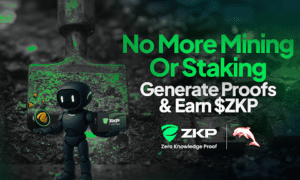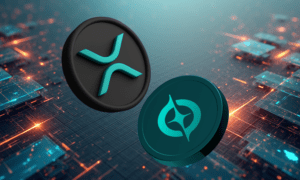Houston, TX —
In an era marked by breakneck technological change and the democratization of artificial intelligence, few individuals have emerged with the rare combination of technical mastery, forward-thinking vision, and real-world execution. Bharathvamsi Reddy Munisif is one such trailblazer. A software engineer by profession, an architect of intelligent systems by passion, and a research mind by conviction, Bharathvamsi is redefining how data, AI, and cloud infrastructure intersect to power the digital economies of tomorrow.
His journey is not one of overnight success, but of relentless pursuit—pursuit of better performance, smarter automation, and scalable intelligence in the world’s most critical systems. While many are content deploying technology, Bharathvamsi asks how to make it adaptive, intelligent, and self-improving. This very question led him to author two transformative research works that are already influencing how organizations approach cloud-native development and AI-powered business logic.
Forged in Code: A Journey from Roots to Cloud Innovation
Bharathvamsi’s story is rooted in a foundational love for logic and systems—traits nurtured in the vibrant academic culture of India. After earning his engineering degree, he quickly demonstrated an aptitude for backend engineering, cloud integration, and data-driven problem-solving. His curiosity didn’t stop at development—it extended to understanding the behavior of systems at scale, particularly in dynamic, high-stakes domains like commodity trading and analytics.
With time, he honed his skills across programming languages (Java, Python, TypeScript), microservices architecture, and AWS cloud services—transforming from a competent developer to a systems innovator. Today, he’s recognized for his ability to bridge production-grade cloud infrastructure with advanced machine learning pipelines—an increasingly vital fusion in enterprise IT.
Redefining Commodity Valuation with Machine Learning
One of Bharathvamsi’s most significant contributions comes in the form of an ML-powered derivation engine—a game-changing solution for modernizing how commodity prices and trade valuations are computed in real-time.
In traditional trading environments, financial derivations such as spreads, notional values, and adjusted prices are computed via static rule sets—often hardcoded by analysts, locked in Excel macros, or embedded in legacy enterprise systems. These brittle systems don’t just slow down operations; they’re fragile in the face of changing market conditions.
Bharathvamsi’s innovation replaces this rigidity with intelligent adaptability. His system learns from historical trade data using supervised learning models (Random Forest, Gradient Boosting), capturing complex valuation patterns that mirror the logic of experienced traders. Unlike rule engines, this solution evolves. It integrates seamlessly via Spring Boot APIs, responds in real-time with AWS Lambda and SageMaker, and learns continuously through feedback loops—where user overrides retrain the models to improve predictions.
With over 92% accuracy in live scenarios and a 30% reduction in manual input effort, the engine not only boosts trader productivity but also captures institutional knowledge previously siloed in senior minds. This creates a sustainable, scalable valuation system that future-proofs operations against volatility and turnover.
Engineering Stateful Systems in a Stateless World
While machine learning transformed the derivation side of his work, Bharathvamsi turned his attention to a foundational challenge in cloud computing: integrating PostgreSQL—a stateful relational database—into stateless serverless architectures.
It’s a well-known paradox. Serverless platforms like AWS Lambda offer scalability, agility, and fine-grained billing. But they’re ephemeral and stateless by nature—ill-suited for long-lived database connections. Most architects either avoid relational backends or settle for NoSQL. Bharathvamsi refused to compromise.
He designed and tested a robust architecture that connects AWS Lambda with Amazon RDS for PostgreSQL in high-throughput event-driven pipelines. CSV files uploaded to S3 trigger ingestion Lambdas, which batch-process records and write to PostgreSQL. Query Lambdas, in turn, extract real-time insights from the database—all without manual intervention.
The system was tested under real-world simulation, ingesting up to 1 million records per hour while maintaining sub-400ms latency. With optimizations like Amazon RDS Proxy, intelligent connection pooling, and Lambda memory tuning, the architecture achieved consistent throughput and cost-efficiency—proving that PostgreSQL can indeed thrive in the serverless era.
His results were clear: with the right orchestration, stateful systems can exist harmoniously within stateless frameworks, unlocking new hybrid possibilities for enterprise workloads.
A Voice for Ethical, Scalable, and Transparent AI
One recurring theme in Bharathvamsi’s research is explainability. As AI becomes more embedded in business-critical workflows, its predictions can no longer be black boxes. Traders and compliance teams must understand why a derivation was suggested or why a model behaved a certain way.
To that end, Bharathvamsi has championed the integration of SHAP (SHapley Additive Explanations) into his ML pipelines—providing real-time transparency into feature contribution and model behavior. His goal: make AI not just powerful, but trustworthy and auditable.
He’s also exploring NLP extensions—enabling the model to learn from free-form trader annotations and domain commentary—and a hybrid logic model that combines deterministic rules with machine-learned intuition. This hybrid approach ensures compliance in regulated environments while maintaining the flexibility of adaptive learning.
Looking Ahead: The Architect of a Smarter Cloud
While Bharathvamsi’s current work has already reshaped valuation engines and serverless design patterns, his vision extends further. He envisions a future where cloud systems self-tune based on user behavior, where databases adapt to real-time usage patterns, and where AI agents become collaborative partners to business teams—not just tools.
With a clear understanding of enterprise priorities, DevOps pipelines, and cost-performance tradeoffs, Bharathvamsi continues to design solutions that don’t just scale—they elevate. His approach fuses agility with governance, innovation with accountability.
He’s not chasing buzzwords. He’s quietly building systems that make companies faster, smarter, and more resilient. And in doing so, he’s becoming a name synonymous with the next wave of intelligent cloud engineering.





























